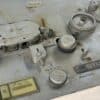Plan, Build, and Future-proof your AV digitization Project
Safeguarding and unlocking audiovisual (AV) collections can be daunting. The stakes are high: aging magnetic tapes and film reels, obsolete equipment, and the looming risk of irreversible deterioration. Yet with the right approach, even large and complex projects can succeed. This article outlines a step-by-step methodology used by preservation professionals to help institutions and organizations transform analog media into reliable, accessible digital assets—cost-effectively and with long-term access in mind.
Consultation: define your mission before you act
Every strong project starts with a clear objective. Whether the goal is to safeguard a VIP videotape collection, enable public access, or prepare for long-term storage and cataloguing, this stage sets the direction.
It’s about more than just asking “what do we want to digitize?” Successful consultations involve:
- Defining priorities (preservation vs. access vs. exhibition)
- Clarifying target audiences or internal use cases
- Assessing available time, staff, and space
- Aligning the scope with budget realities
Benchmarking tools are often used at this stage to compare existing infrastructure and processes against industry standards. They help identify what’s missing and what’s possible.
If you’re still in the early stages of planning or unsure about the condition of your collection, available equipment, or technical knowledge, consider trying an Archive readiness Evaluator. It asks targeted questions about your media formats, storage conditions, workflows, and team capacity – and provides a snapshot of your current readiness, along with practical next steps.

System Analysis: evaluate your existing setup
Once goals are defined, the next step is to assess the tools already available.
- Playback equipment: Are your tape decks or film scanners in working condition? Are they the right models for your formats?
- Facility readiness: Is there enough space? Is there control over light, humidity, dust, and electromagnetic interference?
- Current workflows: Are digitization processes already in place? If so, are they efficient and future-proof?
A proper system analysis uncovers technical bottlenecks and overlooked environmental factors that can affect both quality and safety.
Cost analysis: know what it really costs
Budgets can make or break a digitization project. Yet many cost estimates are little more than educated guesses. A more precise approach involves:
- Breaking down equipment, staffing, and infrastructure costs
- Calculating per-tape or per-hour digitization rates
- Forecasting potential savings through reuse or outsourcing
- Factoring in future upgrades or scaling needs
Putting real numbers on the table helps institutions avoid surprises and negotiate funding with confidence.
Design & Specification: build a blueprint that fits
A good system design includes:
- Specifications for hardware and software (e.g., capture cards, converters, QC tools)
- Workflow mapping (e.g., tape cleaning → playback → capture → QC → storage)
- Compatibility planning (ensuring each component works with the others)
- Human resources needed (e.g., number of operators per shift)
Designs can be adapted as more information becomes available or as testing reveals new constraints.
Equipment Procurement: find the right tools
The ideal equipment setup isn’t necessarily the most expensive—it’s the one that aligns with your formats, workflows, and long-term goals. Procurement should cover both hardware and software components that work together seamlessly.
Hardware may include:
- Broadcast-grade VTRs or film scanners (new or refurbished)
- Time base correctors, signal converters, and monitoring tools
- Tape cleaning machines for dusty or mouldy carriers
- Specialized accessories (e.g., test and calibration tapes)
- Secure storage systems with scalable capacity and backup options
Software considerations are equally critical:
- Workflow and QC management: Systems for coordinating multi-step processes and verifying technical quality at each stage
- File handling and transcoding tools: For managing master files, creating proxy files, and ensuring format compatibility across platforms
- Metadata creation platforms: For tagging, cataloguing, and integrating descriptive, structural, and technical metadata into your archive
- Automated content analysis tools: AI-powered solutions that analyze video and audio for speech-to-text, face recognition, music detection, and scene segmentation – making your content searchable and accessible
Selecting tools that integrate well with one another—across capture, QC, metadata, and storage—can prevent costly bottlenecks later and make your digitization project future-ready.
Construction & Setup: turn plans into reality
With the blueprint and equipment ready, the physical setup begins. This phase includes:
- Installing wiring, furniture, ventilation, and lighting
- Assembling racks or digitization stations
- Calibrating machines and aligning signal paths
- Installing software and setting up automation
Environmental controls (e.g., temperature, humidity, dust filtration) may also be part of this phase, especially in long-term digitization environments.
Training & Long-term support: Empower your Team
Once the system is operational, staff must be trained not just to use it, but to manage and troubleshoot it.
Training typically covers:
- Proper media handling and preparation
- Equipment operation and maintenance
- Signal monitoring and quality control
- File management and data integrity checks
Ongoing support – whether internal or outsourced – ensures systems remain reliable over time and that institutional knowledge is retained even if key personnel leave.
What are the real benefits of a structured approach?
Too often, digitization efforts begin with good intentions but falter due to lack of planning, insufficient tools, or poorly scoped budgets. Following a structured methodology offers tangible benefits:
- Clarity: Everyone involved understands what’s being done and why
- Efficiency: Bottlenecks and dead-ends are avoided early
- Scalability: Systems are built to grow with future needs
- Sustainability: Training and support ensure continuity
- Value for money: Costs are predicted, not guessed
Final Thoughts
Preserving audiovisual heritage is time-sensitive, technically demanding, and too important to leave to improvisation.A well-structured digitization project starts with listening, planning, and understanding—and ends with access, longevity, and peace of mind.
Whether you’re running a small archive or a national institution, adopting a professional, staged approach will dramatically improve your chances of success.









